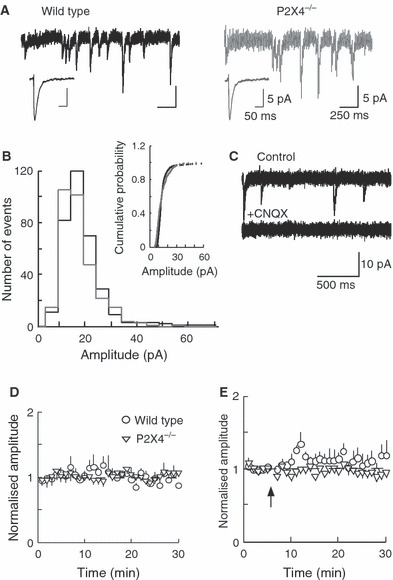FIG. 2.

(A) Typical sEPSCs from wild-type (left) and P2X4−/− (right) mice. Inset: average event (n = 200) at higher time resolution. (B) EPSC amplitude histograms do not differ between wild-type (black) and knockout (gray) mice. Inset: cumulative probability plot. (C) CNQX (30 μm) blocks all sEPSCs. (D) Normalized average amplitude of sEPSCs of wild-type (open circles, n = 4) and P2X4−/− (triangles, n = 5) mice during 30 min recording. (E) Tetanic stimulation (arrow) does not produce long-lasting potentiation of the amplitudes of sEPSCs in wild-type (open circles, n = 5) or P2X4−/− (open triangles, n = 4) mice. Holding potentials, −60 mV.
